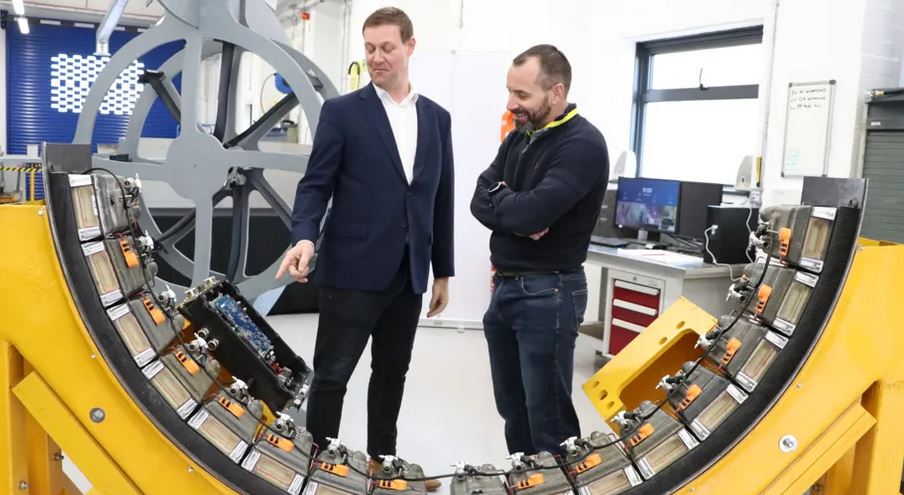
Ricardo, an environmental, and engineering consulting company, has supported Greenjets, pioneers of bespoke, compact jet engines for electric vertical take-off and landing (eVTOL) applications, to create the first generation of an electric fully operational demonstrator propulsion module (InCEPTion) for use in aircraft weighing less than five tonnes.
“The design is fully scalable, efficient and aims to reduce operating costs. It is the culmination of an 18-month project involving design engineers, electrification specialists and project engineers to deliver a bespoke wrap around, immersion cooled, ultra-high-performance battery, using 32 connected modules” according to the press release. “In addition to the design and build of the fully integrated module, Ricardo has been responsible for the compete thermal management system, incorporating increased safety aspects from the initial design stage.
“InCEPTion incorporates 20 kWh worth of battery pack capacity into a very constrained toroidal shape and has been designed to form part of the structure of a propulsion system, with shared cooling and structural elements, making its delivery challenging and complex. The composite module is lightweight, power dense and enables rapid charging. Its cutting-edge design is configured in a 360-degree orientation, with bonded composites and a foam structure to help reduce weight.”
Matt Beasley, Director of Global Engineering and Operations at Ricardo, said “Our engineering expertise within the automotive industry is now enabling us to deliver innovative, sustainable projects in the aerospace and maritime industries, including in the design and development of future sustainable propulsion systems. It’s an exciting time to be involved in these types of projects in support of future decarbonisation across mobility.”
Anmol Manohar, CEO of Greenjets, added: “The architecture of our largest engine, the IPM500, has benefited greatly from our collaboration with Ricardo. With Ricardo’s battery pack integrated into the nacelle of our engine, we make vital savings in efficiency and weight along with close integration with the rest of the powertrain. It also improves safety by moving significant battery weight away from the fuselage. ”
Greenjets says it now plans to undertake ground and wind tunnel tests to support eventual integration into an engine, with the aim of eventual use in commercial aircraft.
For more information
(Image: Ricardo)

